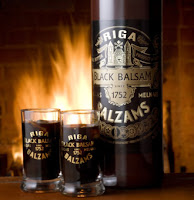"Pálinkás jó reggelt!" Which means, "Good morning with palinka!"
I arrived in Hungary on Sunday and have yet to have my first glass of palinka.
On Monday night I was introduced to a liqueur described as the Hungarian version of Jaeggermeister. I'm not a huge fan of black licorice, which is to say I am not a huge fan of Jaegger. The Hungarian version succeeded in setting a new low.
On my last trip to Hungary I tried the apricot and apple versions of palinka. I enjoyed both, though the apple was best. As it turns out, plum, apricot and pear are the most common varieties of palinka, though your can also find grape, apple, cherry, mulberry and quince. (What the heck is quince, you ask? Apparently a fruit from the Caucus region related to apple and pear.)
Palinka is a fruit brandy made in Hungary and parts of Austria. According to wikipedia, there are several types of palinka:
- Kisüsti (literally "Small pot, cauldron") is a double-distilled pálinka made in a copper pot not exceeding a volume of 1000 litres.
- Érlelt (Aged) is a pálinka aged for at least 6 months in a wooden cask smaller than 1000 litres, or for at least 12 months in a wooden cask of 1000 litres or above.
- Ó (Old) is a pálinka aged for at least 12 months in a wooden cask smaller than 1000 litres, or for at least 24 months in a wooden cask of 1000 litres or above.
- Ágyas ("bedside") is a pálinka aged for at least 3 months together with fruits. The fruits can be of the same sort used to obtain the distillate or of another sort. To 100 liters of pálinka at least 10 kgs of ripe fruits have to be added.
- Törköly (Grape pálinka, also Törkölypálinka) is an alcoholic beverage made from grapes. One of the oldest types of pálinka, it helps digestion, and is usually consumed in small quantities after meals. This is similar to Italian grappa for those familiar with that spirit.
Will provide further updates after some tastings.







